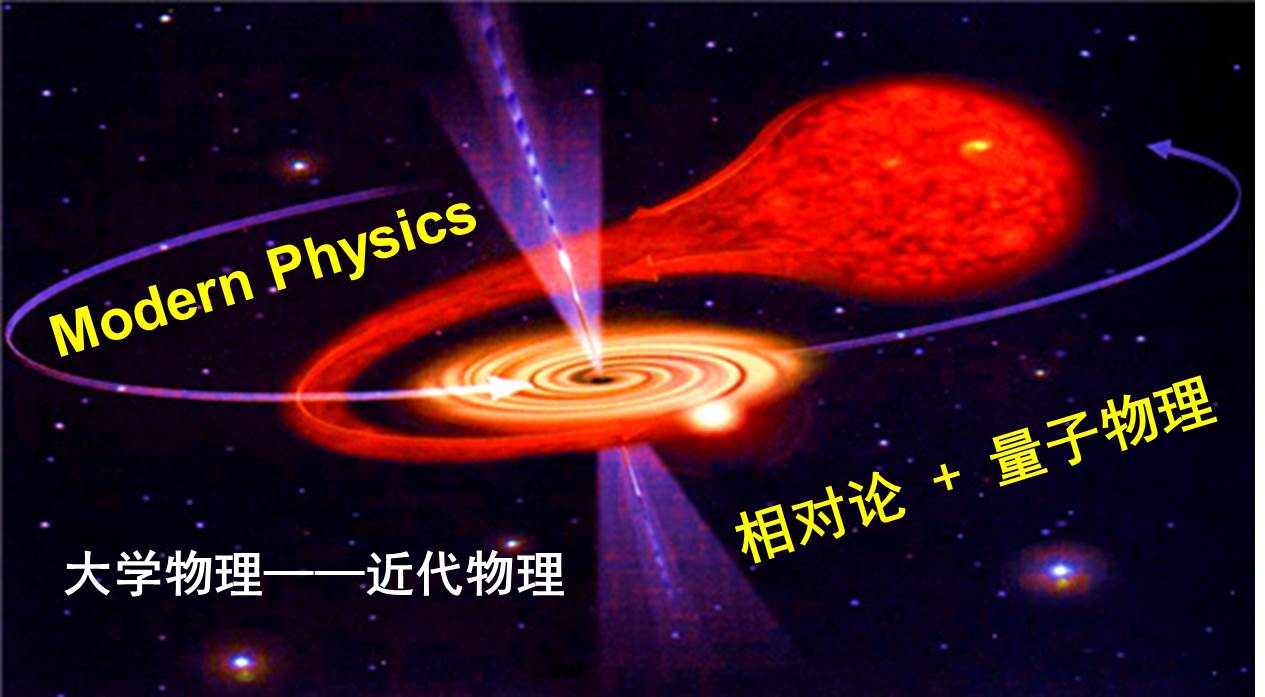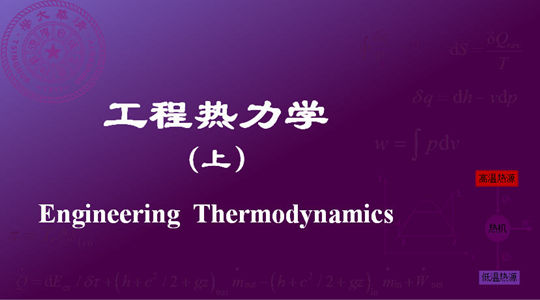
当前课程知识点:Learn Statistics with Ease > Chapter 5 Statistical Index > 5.6 Average target index > 5.6.1 Average index index: first average and then compare 平均指标指数:先平均后对比
返回《Learn Statistics with Ease》慕课在线视频课程列表
返回《Learn Statistics with Ease》慕课在线视频列表
同学们 大家好
Hello, everyone
接下来我们学习第五讲的内容
Next, let's begin the fifth lesson
平均指标指数 先平均,后对比
about average index numbers: average before comparison
你是不是立马反应
You may react immediately
老师我们前面不是刚学过
teacher, we have learned earlier
平均数指数
average number indexes
怎么又来一个平均指标指数呢
why do you come up with average index numbers now
对 第四讲确实是平均数指数
Yes, indeed we learned average number indexes in the fourth lesson
但是大家还记得吗
But do you remember
平均数指数是属于总指数的范畴
average number indexes belong to the category of general indexes
它反映的是总量指标的变动
Because they reflect the changes of aggregate indexes
只不过从形式上
Only
采用了平均数的形式
general indexes are calculated
来计算总指数
in form of average numbers
而今天我们要讲的
But today we're going to learn
叫平均指标指数
Average index numbers
那就是说从反映的对象上
That is to say, in terms of objects reflected
它就有差异
They are different
前面是反映总量指标的变动
What we learned earlier reflects the changes in aggregate indexes
而我们现在反映的是
while what we're going to learn reflects
平均指标的变动
the changes of average index numbers
因为在我们的日常生活里面
Because in our daily life
经常也会面临着要反映
we often face circumstances where
平均指标变动的情形
the changes in average index numbers need to be reflected
那同样的可以通过计算
Similarly, this reflection can also be achieved
指数的形式来反映
in form of index calculation
那我们这一讲主要会包括
Today what we're going to learn mainly include
平均指标指数的定义
the definition
平均指标指数的种类
and types of average index numbers
以及它的指数体系这三个内容
and their index system
我们接下来看
Next, let's take a look at
平均指标指数的定义
the definition of average index numbers
平均指标指数是指
An average index number means
两个不同时期的
the result obtained
平均指标进行对比
by comparison of average indexes
所得到的结果
in two different periods
通常情况下这个平均指标的
Usually,
计算方法是加权算数平均数的形式
average indexes are calculated in form of weighted arithmetic averages
我们也同样地通过一个例子
Likewise, we also take an example
来展开对平均指标指数的学习
to learn average index numbers
首先我们看到
First of all, we see
表格里面的数字
the numbers in the table
表格里面的数字是
These numbers show
某制造业企业员工的薪酬表
the wages of employees from a manufacturing enterprise
那么我现在将工人
Now I divide these employees
分成了研发人员
into technicians
和一般的职工两大类
and general workers
我收集了报告期的人数
I collected the number of people in the report period
基期的人数
and the number of people in the base period
我用了f来表示
I use f to represent
收集了研发人员所对应的
the corresponding monthly average wage of
月平均工资(字符如上)
technicians collected (character as above)
有基期的 有报告期的
for both the base period and the report period
那从表格里边来看
Then from the table
我们可以看一下
we can see
研发人员的工资
that the average wage of technicians
基期是14000(元)
for the base period is 14,000 yuan
报告期是16500(元)
and that for the report period is 16,500 yuan
上涨了吗
Does it rise
涨了
Yes
我们计算它的指数是117%
The index calculated is 117%
说明工资是上涨了17%的
That means the wage is up 17%
那一般职员
For a general worker
他的工资从5000(元)上涨到6000(元)
his wage rises from 5,000 yuan to 6,000 yuan
那上涨的幅度比研发人员
an increase
还来得更高20%
20% higher than that of a technician
那一般来讲
Generally speaking
我们可能会认为
we may believe
研发人员的工资涨了
If the wages of technicians rise
一般职工的工资也涨了
so do those of general workers
那平均工资是不是也应该涨了
and also so does the average wage
那接下来我们就先来算一算
Next let's calculate
两个不同时期的平均工资
the average wages in two different periods separately
看看它是不是如我们所想的
to see if they
真的涨了
really rise as we think
基期的平均工资怎么算
How to calculate the average wage in the base period
当然用基期的总工资
Of course, it equals to the total wages in the base period
除以基期的人数就可以了
divided by the number of people in the base period
它当然等于(字符如上)
Of course, it equals to (character as above)
计算的结果是10400(元)
The result calculated is 10,400 yuan
报告期的工资
The average wage in the report period
可以用同样的方法
can be calculated
来进行计算
in the same way
还是用(字符如上)的形式来计算
That is, in the form of (character as above)
把数字代入进去
We put the numbers into the formula
计算的结果是10200(元)
Then the result calculated is 10,200 yuan
怎么样
All right
比基期增加了吗
Is it higher than that in the base period
10200(元)比10400(元)少了
10,200 yuan is less than 10,400 yuan
有点奇怪
It's a bit weird
明明每个人都涨了工资
It's obvious that everyone's wage rise
平均工资怎么还会减少呢
But why does the average wage drops
问题出在哪里了
What's the problem
是不是和我们一般的想象
It's a little different from
有点不同呢
our imagination, isn't it
这是不是出现了一个悖论呢
There is a paradox, right
这种悖论有一个特别的名字
This paradox has a special name
叫辛普森悖论
-- Simpson's paradox
如果大家感兴趣
If you're interested
可以搜集更多的资料来了解
you can collect more information to understand
辛普森悖论有关方面的知识
the knowledge about Simpson's paradox
那我们就要来分析分析
Then we need to analyze
这里面的原因了
the reasons for this phenomenon
平均工资它的变动
The change in average wage
是已经从数字上可以看出来的
can be seen from the number
那么平均工资的变动
So can the change in average wage also
是不是也可以通过指数的形式
be calculated
来计算呢
in form of index
那么我们可以用(字符如上)
Then we can use (character as above)
来反映平均工资的变动
to reflect the change of average wage
那(字符如上)
Then (character as above)
把数字代入进去以后
after putting the numbers in the formula
我们发现它的结果是98.08%
we find that the result is 98.08%
下降了1.92%
down 1.92%
减少的绝对数很快可以看得出来
The reduced absolute number will be visible soon
200块
200 yuan
那刚才我们也说了
We said just now that
我们接下来就要分析
We are going to analyze
这200块钱的下降
the cause of
是由什么原因所造成的
the reduction of 200 yuan
那么在这个下降的过程里边
So in the process of reduction
我们仔细观察平均工资的
let's take a closer look at
计算的式子可以发现
the calculation formula for average wage
它受到两个因素的影响
It is influenced by two factors
第一个就是我们符号x代表
The first one is our symbol x that stands for
月平均工资
the monthly average wage
还有一个符号就是f
and the other one is the symbol f
只有这两个符号
Only these two symbols
当然从算术平均数的计算来看
Of course, from the calculation of arithmetic average
起权数作用的
The weigher
本质上应该是相对数
in essence, should be the relative number
也就是我们说的结构
That is, the structure we said
而不是这个f本身
instead of f itself
所以这两个影响因素
So about these two factors
我们近一步的可以分解为
we can further decompose them like this
一个受x也就是月平均工资的影响
One is affected by X, the average monthly wage
一个分解为受结构的影响
The other is affected by the structure
也就是研发人员
That is, the proportion of
一般职工在总职工里边
the number of technicians in general workers
所占的比重来影响
to that of all employees
这样从思路上面看起来
Therefore, in terms of idea
非常类似于我们前面在
it is very similar to
综合指数计算里边
the calculation of composite indexes that we learned earlier
销售额变了
If the sales amount
那它的构成有两个要素
consisting of two factors
一个是p一个是q
p and q changes
那销售额的变动只能
Then the change in sales amount can only
要不由p来影响
be affected by p
要不由q来影响
or q
从结构上来看
In terms of structure
它非常类似于这个结构
it's very similar to this structure
只不过现在从形式上
but now in form
来得更加地复杂
is more complicated
它是平均数除平均数了
It equals to an average divided by another average
所以参照前面的思路
So regarding the previous idea
我们可以将平均指标指数
we can introduce
来介绍它的种类
the types of average index numbers
第一个作为总变动指数的变形
The first type are transformed from general change indexes
我们称之为可变构成指数
We call them variable construction indexes
可变构成指数分子分母
The numerator and denominator of an variable construction index
一个是报告期一个是基期
correspond the report period and the base period respectively
两个因素的时期
The periods corresponding to two factors
同时都在发生变动
are changing simultaneously
也就是刚才
That is, just now
咱们所计算的平均工资的变动了
the average wage we calculated has changed
从形式上面来看
In terms of form
和我们前面的总变动指数
it is very similar
也就是营业额指数
to the general change index mentioned above
很类似
That is, the sales amount index
两个因素
Two factors
同时都在变
are changing simultaneously
那么这个我们就可以把它
Then we can regard it
看成是总变动指数的变形
as a transformed form of general change index
从数据上面来看
In terms of data
刚才我们已经念过一遍
we have read it just now
相对数上面是下降了1.92%
In terms of relative number, it drops by 1.92%
绝对数上面
while in terms of absolute number
是减少了200块钱一个人
it is reduced by 200 yuan/person
好 接下来我们就来进行分解
OK, let's decompose it
分解的时候既然可变构成指数
Since the variable construction index
它是总变动指数的变形
is a transformed form of general change index
那么我们在将可变构成指数
when we are decomposing
去进行分解
the variable construction index
一个是x变化所带来的影响
into the impact brought about by the change of x
一个是(字符如上)变动
and the impact brought about by
所带来的影响的时候
the change of (character as above)
也可以参照
we can also refer to
前面的指数的编制原理来进行
the compilation principle of indexes we learned earlier
比如 如果我们要反映的是
For example, if we want to reflect
结构的变动
the impact
所带来的影响
brought about by the change of structure
那我们就要先分析分析看
then we need to analyze first
结构在我们这个指数的构成里边
whether the structure is in the composition of the index
它是属于数量指标
a quantity index
还是属于质量指标
or a quality index
那结构如果确定了
If structure is determined
另外一个跟它对应的就是x
it will correspond to X
也就是月平均工资
That is, the average monthly wage
在这两个指标本质上来看
In essence, of these two indexes
一个是平均数
one is the average number
一个是比重
the other is the proportion
也就是我们的一个相对数
which is a relative number
从指数的归属上面来看
In terms of index attribution
都属于质量指标
they are all quality indexes
但是我记得在前面
But I remember when we
讲数量指标指数
were classifying
和质量指标指数的
quantity index numbers
分类的时候
and quality index numbers earlier
我们也讲了
we have learnt that
这个指标的定性不是绝对的
the property of indexes is not absolute
它是相对的
but relative
要看它在整个构造里边
It depends on
另一个指标
the property of another index in the whole structure
和它相比的性质
in comparison with it
在这两个指标的比较里边
In the comparison of these two indexes
x也就是月平均工资
X, the monthly average wage
它属于质量指标
belongs to a quality index
而(字符如上)
but (character as above)
这一次它属于数量指标
This time it's a quantity index
因此这一次如果我们要反映
So this time, if we want to reflect
结构变动所带来的影响
the impact brought about by the change of structure
当然首先它自己的下标
of course, first of all, the subscript
在分母里面一定是0
must be 0 in the denominator
在分子里面一定是1
and 1 in the numerator
报告期除以基期
That is the report period divided by that in the base period
而x这一次
And this time X
就应该充当同度量因素的作用
should act as an isometric factor
它的时间就应该固定下来
The time should be fixed
固定在什么时候呢
When is it fixed
既然刚才咱们分析
Since we just analyzed
(字符如上)
(character as above)
它是类似于数量指标
it's similar to a quantity index
那么同度量因素 质量指标
the isometric factor, quality index
就应该被固定在基期
should be fixed in the base period
那它就可以看成是
Then it can be seen as
拉氏指数的变形了
a transformed form of Laspeyres index
按照这样的思路去变形
If you transform according to this idea
我想你不容易出错
I don't think you are easy to make mistakes
也说明前面综合指数的基本原理
It also shows that you have had a good command of
掌握得好
the basic principles of composite indexes we learned earlier
因此我们可变构成指数
So our variable construction index
分解第一个得到的结构影响指数
is decomposed into the structural impact index first
反映结构的变动
which reflects
所带来的影响
the impact brought about by the change of structure
那么结构影响指数
Then the structural impact index
它相当于是
corresponds to
数量指标指数的变形
the transformed form of quantity index number
注意基本原理还是拉氏指数
Please note that the basic principle is still Laspeyres index
同度量因素被固定在基期
The isometric factor is fixed in the base period
来看一下
Let's take a look at
数据计算的结果
the results of data calculation
我们仍然可以利用
We can still use
表格里面的数字
the numbers in the table
首先我们可以将分子(字符如上)
First, we can set the numerator (character as above)
令它等于(字符如上)
to be (character above)
一个假想时期的平均工资
the average wage in an assumption period
把数字代入进来计算的结果是
Putting the numbers in the formula
8600(元)除以10400(元)
8,600 (yuan) ÷ 10,400 (yuan)
等于82.69%
= 82.69%
分子减去分母则可以反映
numerator minus denominator can reflect
结构变动给平均工资所带来的影响
the impact brought about by the change of structure on the average wage
从数字上来看
In terms of numbers
使得每个人的平均工资
everyone's average wage
是下降了1800(元)的
drops by 1,800 yuan
也就是说
In other words
排除工人月平均工资的变动
excluding the change in the average monthly wage of employees
纯粹由于工人结构的影响
only due to the impact of employee structure
使得总平均工资是下降了17.31%
the total average wage is reduced by 17.31%
人均减少了1800(元)
an average decrease of 1,800 yuan/person
这样第一个指数也就是
So the first index
影响因素里面的第一个指数
that is, the first index among influencing factors
我们就给它分解出来了
has been decomposed
第二个指数
As for the second index
我想大家都已经猜到了
I think you've already guessed it
肯定是质量指标指数的变形
It must be a transformed form of quality index number
因为刚才我们已经有一个
Because we already get
数量指标指数的变形
a transformed form of quality index number
那质量指标这一次
So this time the quality index
它就应该是对应x
should corresponds to X
那分子毫无疑问x{\fs8}1{\r}
Undoubtedly, the numerator is x{\fs8}1{\r}
分母毫无疑问x{\fs9}0{\r}
and the denominator is x{\fs9}0{\r}
那f的时间也应该被固定下来
The time corresponding to f should be fixed
所有的f的时间
All time corresponding to f
这一次都应该被固定在报告期
should be fixed in the report period this time
因为它是帕氏指数的变形
because it's a transformed form of Paasche index
所以我们就可以得到
So we can get
固定构成指数
an invariable construction index
你可以看出来
You can see that
为什么叫固定构成指数
why is it called invariable construction index
因为结构是固定下来的
Because the structure is fixed
那它可以简化成(字符如上)
Then it can be reduced to (character as above)
它相当于质量指标指数的变形
It is equivalent to a transformed form of quality index number
采用帕氏指数同度量因素
Which, by use of isometric factor for Paasche index
被固定在报告期
is fixed in the report period
同样的我们可以把数据代入进去
In the same way, we can put the data in the formula
计算固定构成指数
to calculate relative number and absolute number
所对应的相对数和绝对数
corresponding to invariable construction index
分别是118.6%
The results are 118.6% respectively
从绝对数上面来看
In terms of absolute number
它使得平均工资
it makes the average wage
每个人增加了1600(元)
rise by 1,600 yuan/person
那这个指数也可以做简短的
Then we can also make a brief
文字说明
literal description on this index
排除工人结构的变动
Excluding the change in employee structure
纯粹由于月平均工资的影响
only due to the impact of the monthly average wage
使得总平均工资上升了18.6%
the total average wage rise by 18.6%
平均每个人增加了1600(元)
an average increase of 1600 yuan/person
这样的话
In that case
我们就利用指数编制的基本原理
We can take the basic principle of index compilation
基本原理还是来自于综合指数
which is still based on composite indexes
数量指标指数
The quantity index number
用拉氏指数计算
is calculated through Laspeyres index
同度量因素被固定了基期
If the isometric factor is fixed in the base period
而质量指标指数用帕氏指数来计算
the quality index number should be calculated through the Paasche index
同度量因素被固定在报告期
If the isometric factor is fixed in the report period
如果我们现在来捋一捋
If we can sum up
指数的计算原理
the principles of index calculation
我们发现从前到后
we find that from beginning to end
我们的指数计算原理
our principles of index calculation
主要都来自于综合指数
are mainly based on composite indexes
我们一起全部捋一下
Let's sort out all
综合指数
composite indexes
数量指标指数用拉氏指数计算
Quantity index numbers should be calculated through Laspeyres index
同度量因素被固定在基期
If the isometric factor is fixed in the base period
它经过变形以后
After transformation
总指数变形是得到
a general index turns to be
加权的算术平均数指数
a weighted arithmetic average index
平均指标指数
An average index number
它也可以变形
can also be transformed
它变形以后得到的是
and it turns to be
结构影响指数
a structural impact index
所以从数量指数的出发
So from the quantity index number
它可以得到一条线
it can get a line
从质量指标指数
From the quality index number
也可以得到一条线
it can also get a line
质量指标指数
The quality index number
用帕氏指数来计算
should be calculated through Paasche index
同度量因素被固定在报告期
If the isometric factor is fixed in the report period
变形以后可以得到一个
After transformation, it turns to be
加权调和平均数指数
a weighted harmonic average index number
和固定构成指数
and an variable construction index
所以指数计算从前到后
So in the whole calculation process of index calculation
其实就只有这条基本原理
This is the only basic principle
这是我们指数这一章的主线
It is also the mainline of this chapter on indexes
如果大家善于总结
If you are good at summarizing
我想在你们前几次课的学习里面
I believe in previous lessons
说不定已经给它总结出来了
You might have summed up it
所以虽然看起来指数这一张
So even though it seems hard to
从前到后有这么多公式
remember so many formulas
看似很难记
in this chapter on indexes
但其实基本原理都只有这一个
This is the only basic principle
你就记住那六个字就好了
Just remember these six words
我们通常念
We usually call them
“数拉基”,“质帕报”
"number, Laspeyres and base", "quality, Paasche and report"
有这六个字
Only these six words
就可以帮你把指数全部串起来了
can help you string up the knowledge about indexes
这就是平均指标指数的
That is, three independent forms of
三个独立的形式
average index number
有可变构成指数
variable construction index
有结构影响指数
structural impact index
有固定构成指数这三个
and invariable construction index
细心的同学已经发现
Careful students have found that
总平均工资减少了200块
the total average wage is reduced by 200 yuan
而结构影响指数带来的是
What the structural impact index brings is
负的1800块
- 1,800 (yuan)
固定构成指数带来的是
What the invariable construction index brings is
增加了1600块
1,600 (yuan)
加起来不正好是减少了200块吗
The result of adding the two is 200 yuan
没错
Yes
平均指标指数数量上
Average index numbers
也具有这个等量关系
are also quantitatively equivalent
那也就意味着指数体系
That means the index system
依然是有效的
is still valid
既然刚才在讲课的时候
Since, as I said just now
它们都是从综合指数的
they are all transformed from certain indexes consisting of
某一个指数出发变形来到的
a composite index
大家也可以想象
You can imagine
从构造上来讲
In terms of structure
它应该也会有相对数和绝对数上的
they should also be
对等关系
equivalent in relative number and absolute number
那相对数上面
In terms of relative number
它们依然有连乘的关系
they still have a multiplication relationship
绝对数上面也有这个求和的关系
In terms of absolute number, they also bear a summation relationship
所以从数量上面来看
So in terms of quantity
它依然会有这两个等式
these two equations are still satisfied
98.08%=82.69%×118.6%
从绝对数上面来看
In terms of absolute number
-200(元/人)=-1800(元/人))+1600(元/人)
-200 (yuan/person) = -1,800 (yuan/person)) + 1,600 (yuan/person)
这就是平均指标指数体系
This is the average index number system
它依然帮助我们进行
It still helps us
因素分析
with factor analysis
那总体来说
Well, on the whole
我们可以用文字把它描述一下
we can describe it in words
整个指数体系
the whole index system
排除工人月平均工资的变动
Excluding the change in the monthly average wage of employees
纯粹由于工人结构的变动
only due to change of employee structure
使得总平均工资下降了
the total average wage is reduced by
17.31%
人均减少了1800(元)
an average decrease of 1,800 yuan/person
排除工人结构的变动
Excluding the change in employee structure
纯粹由于月平均工资的影响
only due to the impact of the average monthly wage
使得总平均工资上升18.6%
the total average wage rise by 18.6%
人均增加1600(元)
an average increase of 1,600 yuan/person
两个因素共同作用的结果
The interaction of two factors
使总平均工资下降了1.92%
leads to a 1.92% drop in the total average wage
人均减少了200(元)
an average decrease of 200 yuan/person
这也可以帮助我们利用指数体系
This can also help us use the index system
进行因素分析
to conduct factor analysis
因此从头到尾我们总结一下
So let's summarize the whole process
我们学习的指数体系有三套
We have learned three sets of index system
一 综合指数指数体系
The first is the composite index system
第二平均数指数体系
The second is the average number index system
这两套都是针对总量指标
These two sets are designed for
来进行分析的
analysis of aggregate indexes
第三套则是我们刚刚学过的
The third is the average index number system
平均指标指数体系
that we just learned
它反映的是平均指标的变动
It reflects the changes in average indexes
以及造成它变动的因素
and the analysis of
来进行分析
their influencing factors
所以这就是指数在编制的过程里边
So this is
最核心的内容
the core content of index compilation
这一讲的内容就是这样
That's what this lesson is about
-1.1 Applications in Business and Economics
--1.1.1 Statistics application: everywhere 统计应用:无处不在
-1.2 Data、Data Sources
--1.2.1 History of Statistical Practice: A Long Road 统计实践史:漫漫长路
-1.3 Descriptive Statistics
--1.3.1 History of Statistics: Learn from others 统计学科史:博采众长
--1.3.2 Homework 课后习题
-1.4 Statistical Inference
--1.4.1 Basic research methods: statistical tools 基本研究方法:统计的利器
--1.4.2 Homework课后习题
--1.4.3 Basic concepts: the cornerstone of statistics 基本概念:统计的基石
--1.4.4 Homework 课后习题
-1.5 Unit test 第一单元测试题
-2.1Summarizing Qualitative Data
--2.1.1 Statistical investigation: the sharp edge of mining raw ore 统计调查:挖掘原矿的利刃
-2.2Frequency Distribution
--2.2.1 Scheme design: a prelude to statistical survey 方案设计:统计调查的前奏
-2.3Relative Frequency Distribution
--2.3.1 Homework 课后习题
-2.4Bar Graph
--2.4.1 Homework 课后习题
-2.6 Unit 2 test 第二单元测试题
-Descriptive Statistics: Numerical Methods
-3.1Measures of Location
--3.1.1 Statistics grouping: from original ecology to systematization 统计分组:从原生态到系统化
--3.1.2 Homework 课后习题
-3.2Mean、Median、Mode
--3.2.2 Homework 课后习题
-3.3Percentiles
--3.3 .1 Statistics chart: show the best partner for data 统计图表:展现数据最佳拍档
--3.3.2 Homework 课后习题
-3.4Quartiles
--3.4.1 Calculating the average (1): Full expression of central tendency 计算平均数(一):集中趋势之充分表达
--3.4.2 Homework 课后习题
-3.5Measures of Variability
--3.5.1 Calculating the average (2): Full expression of central tendency 计算平均数(二):集中趋势之充分表达
--3.5.2 Homework 课后习题
-3.6Range、Interquartile Range、A.D、Variance
--3.6.1 Position average: a robust expression of central tendency 1 位置平均数:集中趋势之稳健表达1
--3.6.2 Homework 课后习题
-3.7Standard Deviation
--3.7.1 Position average: a robust expression of central tendency 2 位置平均数:集中趋势之稳健表达2
-3.8Coefficient of Variation
-3.9 unit 3 test 第三单元测试题
-4.1 The horizontal of time series
--4.1.1 Time series (1): The past, present and future of the indicator 时间序列 (一) :指标的过去现在未来
--4.1.2 Homework 课后习题
--4.1.3 Time series (2): The past, present and future of indicators 时间序列 (二) :指标的过去现在未来
--4.1.4 Homework 课后习题
--4.1.5 Level analysis: the basis of time series analysis 水平分析:时间数列分析的基础
--4.1.6Homework 课后习题
-4.2 The speed analysis of time series
--4.2.1 Speed analysis: relative changes in time series 速度分析:时间数列的相对变动
--4.2.2 Homework 课后习题
-4.3 The calculation of the chronological average
--4.3.1 Average development speed: horizontal method and cumulative method 平均发展速度:水平法和累积法
--4.3.2 Homework 课后习题
-4.4 The calculation of average rate of development and increase
--4.4.1 Analysis of Component Factors: Finding the Truth 构成因素分析:抽丝剥茧寻真相
--4.4.2 Homework 课后习题
-4.5 The secular trend analysis of time series
--4.5.1 Long-term trend determination, smoothing method 长期趋势测定,修匀法
--4.5.2 Homework 课后习题
--4.5.3 Long-term trend determination: equation method 长期趋势测定:方程法
--4.5.4 Homework 课后习题
-4.6 The season fluctuation analysis of time series
--4.6.1 Seasonal change analysis: the same period average method 季节变动分析:同期平均法
-4.7 Unit 4 test 第四单元测试题
-5.1 The Conception and Type of Statistical Index
--5.1.1 Index overview: definition and classification 指数概览:定义与分类
-5.2 Aggregate Index
--5.2.1 Comprehensive index: first comprehensive and then compare 综合指数:先综合后对比
-5.4 Aggregate Index System
--5.4.1 Comprehensive Index System 综合指数体系
-5.5 Transformative Aggregate Index (Mean value index)
--5.5.1 Average index: compare first and then comprehensive (1) 平均数指数:先对比后综合(一)
--5.5.2 Average index: compare first and then comprehensive (2) 平均数指数:先对比后综合(二)
-5.6 Average target index
--5.6.1 Average index index: first average and then compare 平均指标指数:先平均后对比
-5.7 Multi-factor Index System
--5.7.1 CPI Past and Present CPI 前世今生
-5.8 Economic Index in Reality
--5.8.1 Stock Price Index: Big Family 股票价格指数:大家庭
-5.9 Unit 5 test 第五单元测试题
-Sampling and sampling distribution
-6.1The binomial distribution
--6.1.1 Sampling survey: definition and several groups of concepts 抽样调查:定义与几组概念
-6.2The geometric distribution
--6.2.1 Probability sampling: common organizational forms 概率抽样:常用组织形式
-6.3The t-distribution
--6.3.1 Non-probability sampling: commonly used sampling methods 非概率抽样:常用抽取方法
-6.4The normal distribution
--6.4.1 Common probability distributions: basic characterization of random variables 常见概率分布:随机变量的基本刻画
-6.5Using the normal table
--6.5.1 Sampling distribution: the cornerstone of sampling inference theory 抽样分布:抽样推断理论的基石
-6.9 Unit 6 test 第六单元测试题
-7.1Properties of point estimates: bias and variability
--7.1.1 Point estimation: methods and applications 点估计:方法与应用
-7.2Logic of confidence intervals
--7.2.1 Estimation: Selection and Evaluation 估计量:选择与评价
-7.3Meaning of confidence level
--7.3.1 Interval estimation: basic principles (1) 区间估计:基本原理(一)
--7.3.2 Interval estimation: basic principles (2) 区间估计:基本原理(二)
-7.4Confidence interval for a population proportion
--7.4.1 Interval estimation of the mean: large sample case 均值的区间估计:大样本情形
--7.4.2 Interval estimation of the mean: small sample case 均值的区间估计:小样本情形
-7.5Confidence interval for a population mean
--7.5.1 Interval estimation of the mean: small sample case 区间估计:总体比例和方差
-7.6Finding sample size
--7.6.1 Determination of sample size: a prelude to sampling (1) 样本容量的确定:抽样的前奏(一)
--7.6.2 Determination of sample size: a prelude to sampling (2) 样本容量的确定:抽样的前奏(二)
-7.7 Unit 7 Test 第七单元测试题
-8.1Forming hypotheses
--8.1.1 Hypothesis testing: proposing hypotheses 假设检验:提出假设
-8.2Logic of hypothesis testing
--8.2.1 Hypothesis testing: basic ideas 假设检验:基本思想
-8.3Type I and Type II errors
--8.3.1 Hypothesis testing: basic steps 假设检验:基本步骤
-8.4Test statistics and p-values 、Two-sided tests
--8.4.1 Example analysis: single population mean test 例题解析:单个总体均值检验
-8.5Hypothesis test for a population mean
--8.5.1 Analysis of examples of individual population proportion and variance test 例题分析 单个总体比例及方差检验
-8.6Hypothesis test for a population proportion
--8.6.1 P value: another test criterion P值:另一个检验准则
-8.7 Unit 8 test 第八单元测试题
-Correlation and regression analysis
-9.1Correlative relations
--9.1.1 Correlation analysis: exploring the connection of things 相关分析:初探事物联系
--9.1.2 Correlation coefficient: quantify the degree of correlation 相关系数:量化相关程度
-9.2The description of regression equation
--9.2.1 Regression Analysis: Application at a Glance 回归分析:应用一瞥
-9.3Fit the regression equation
--9.3.1 Regression analysis: equation establishment 回归分析:方程建立
-9.4Correlative relations of determination
--9.4.1 Regression analysis: basic ideas
--9.4.2 Regression analysis: coefficient estimation 回归分析:系数估计
-9.5The application of regression equation







